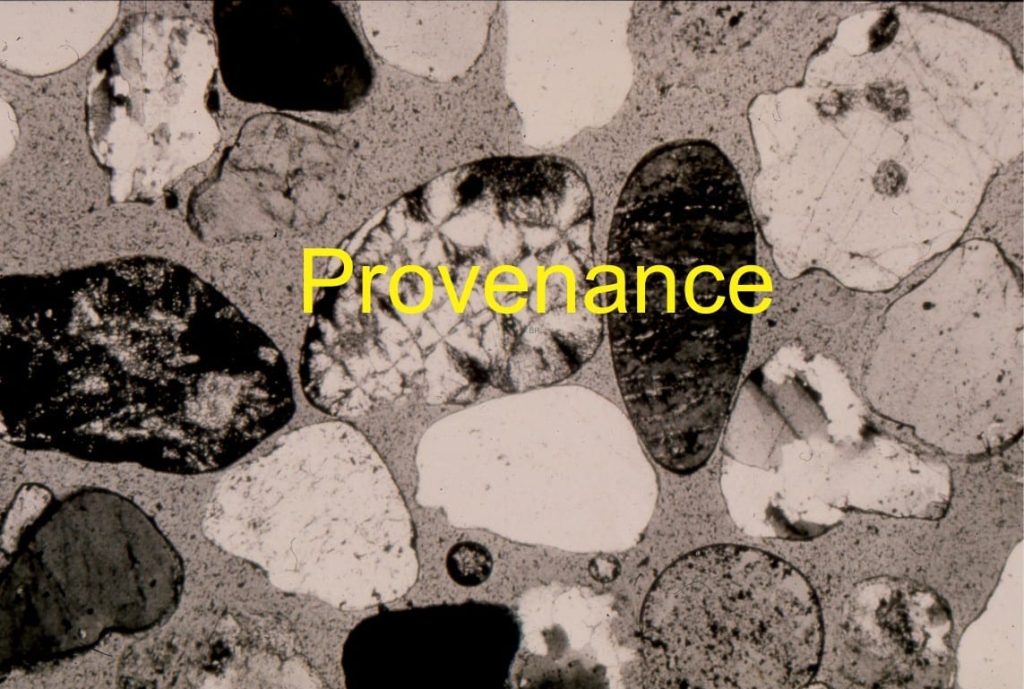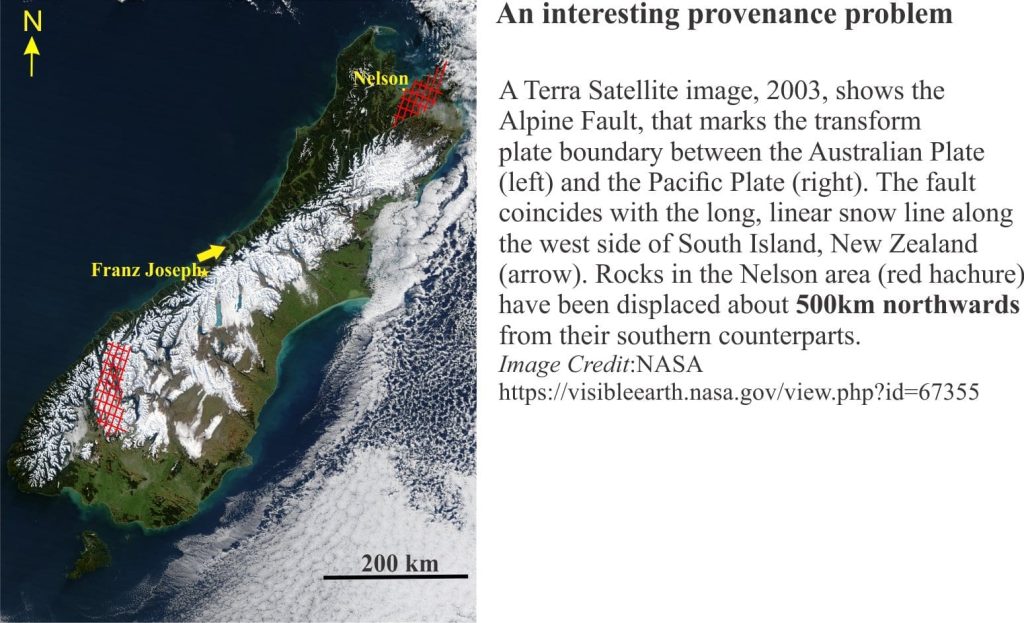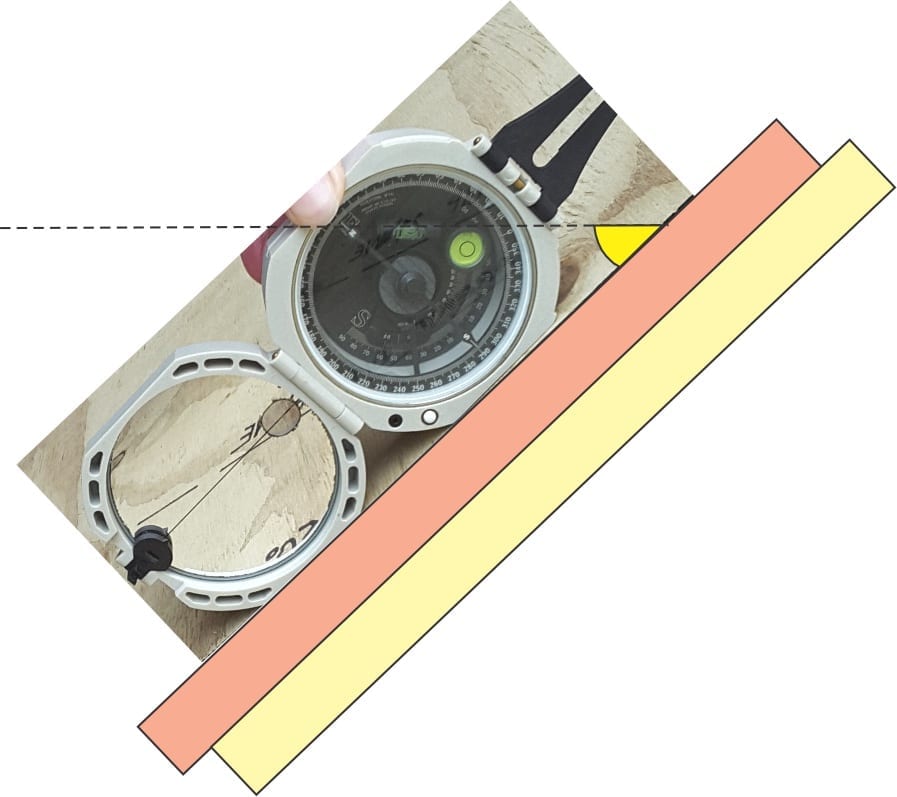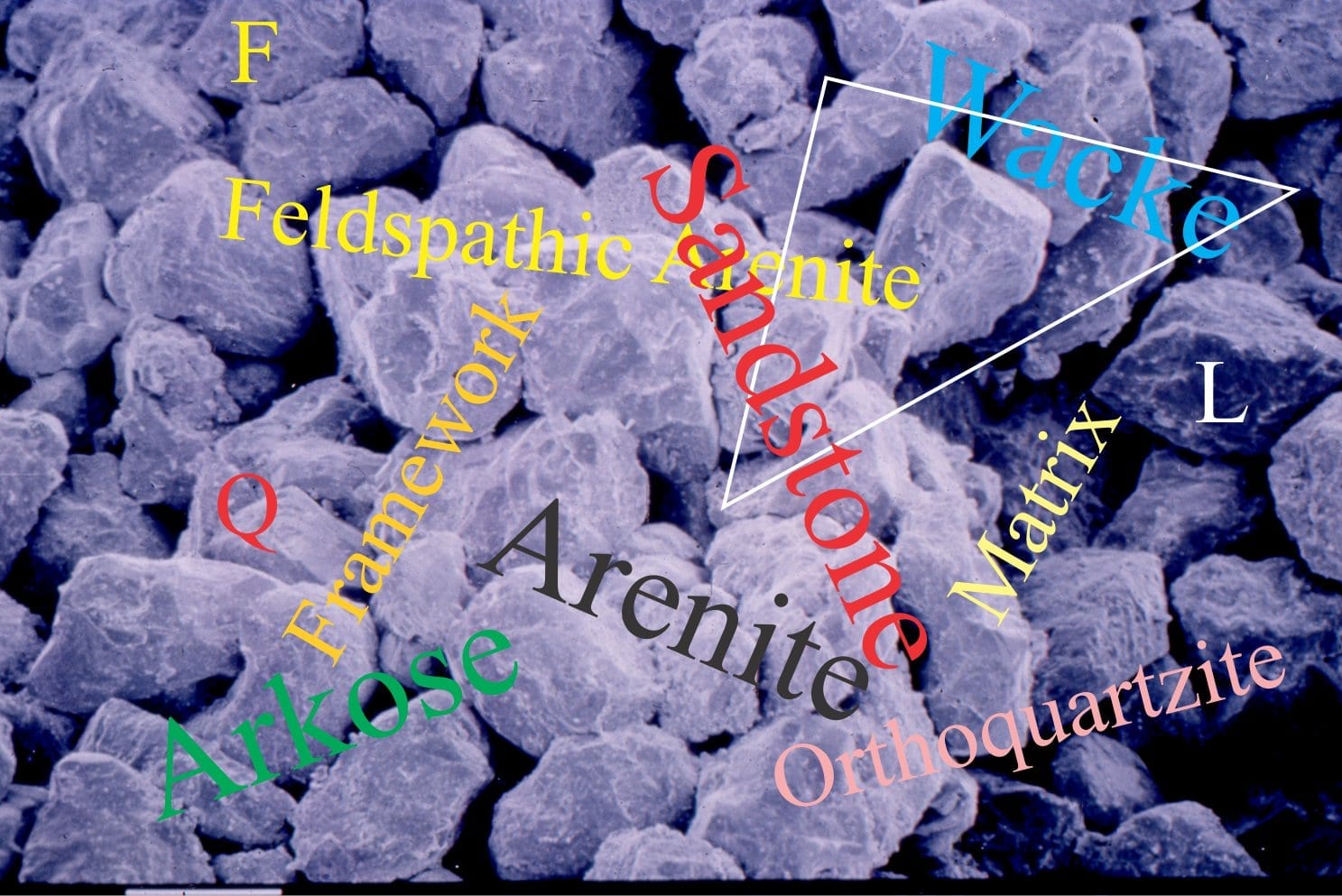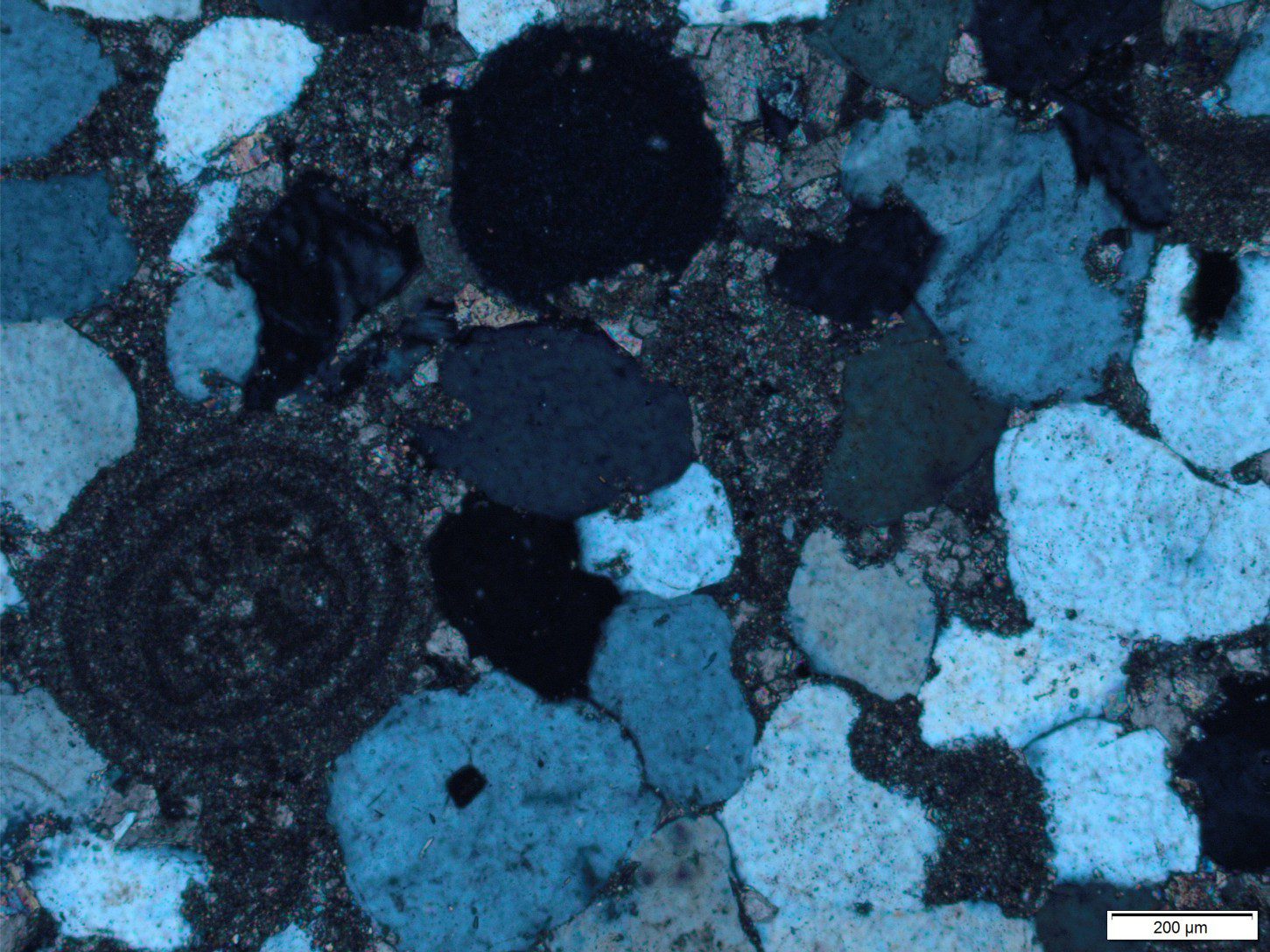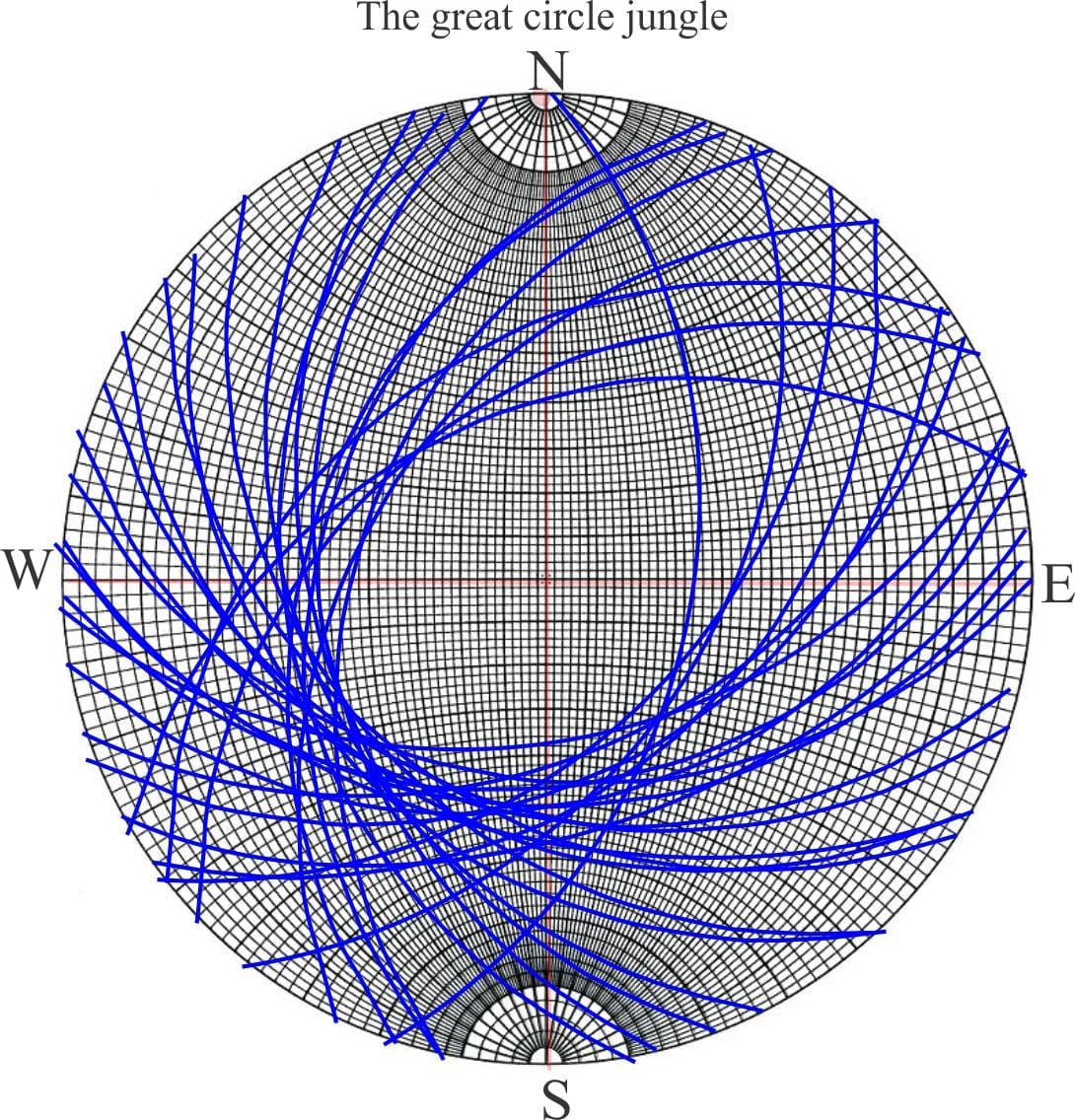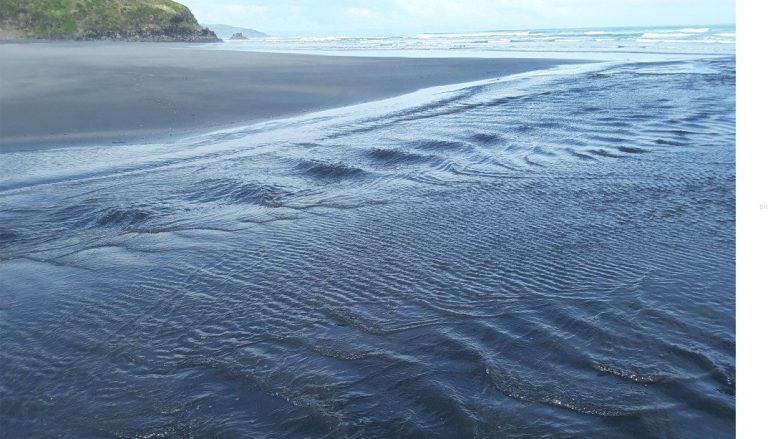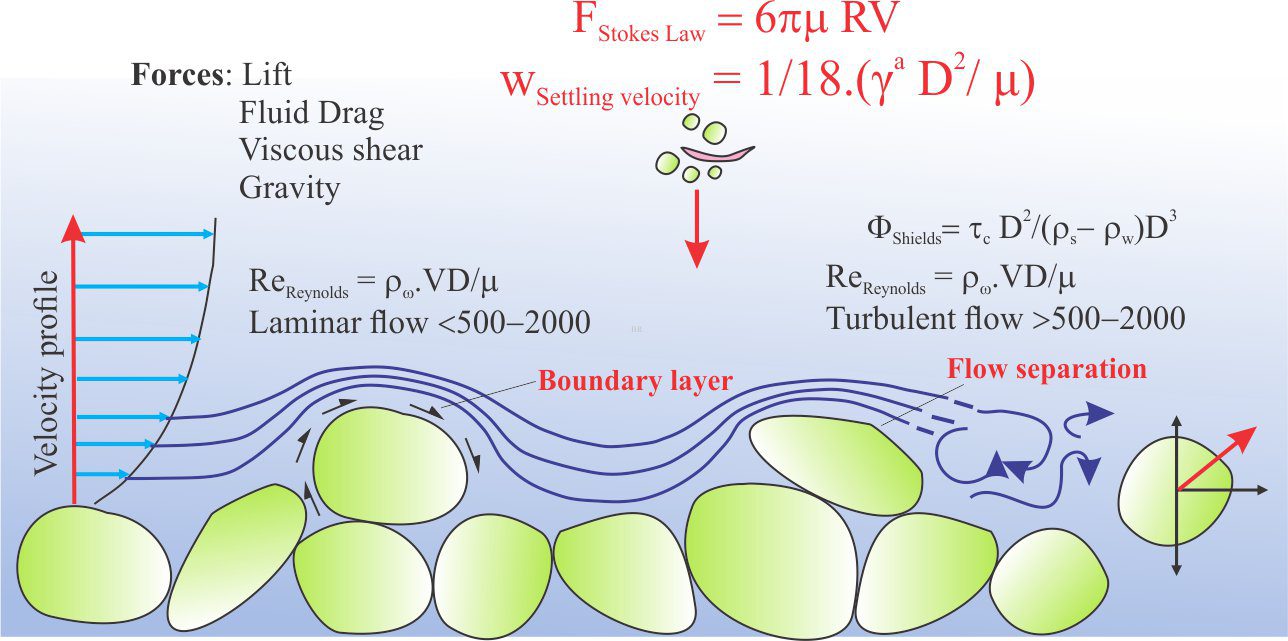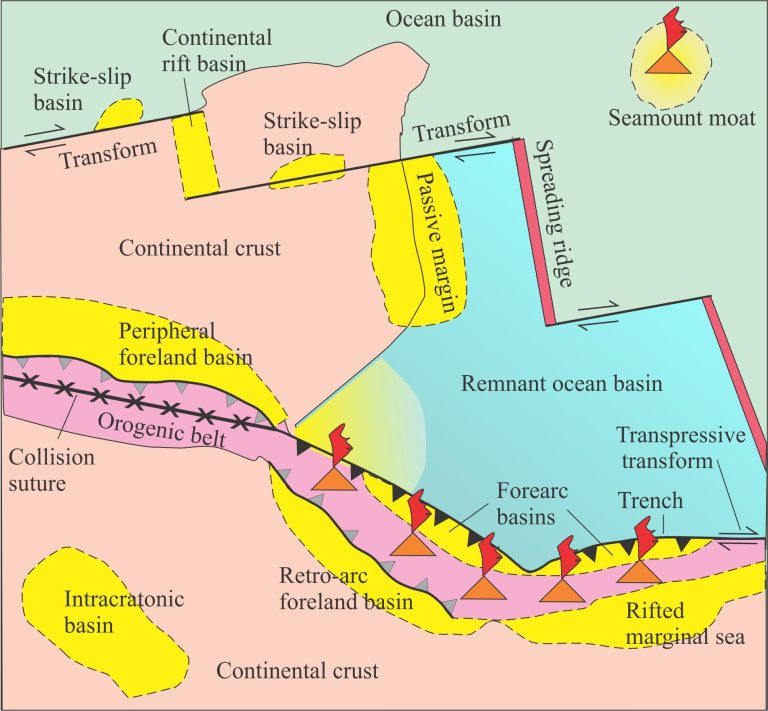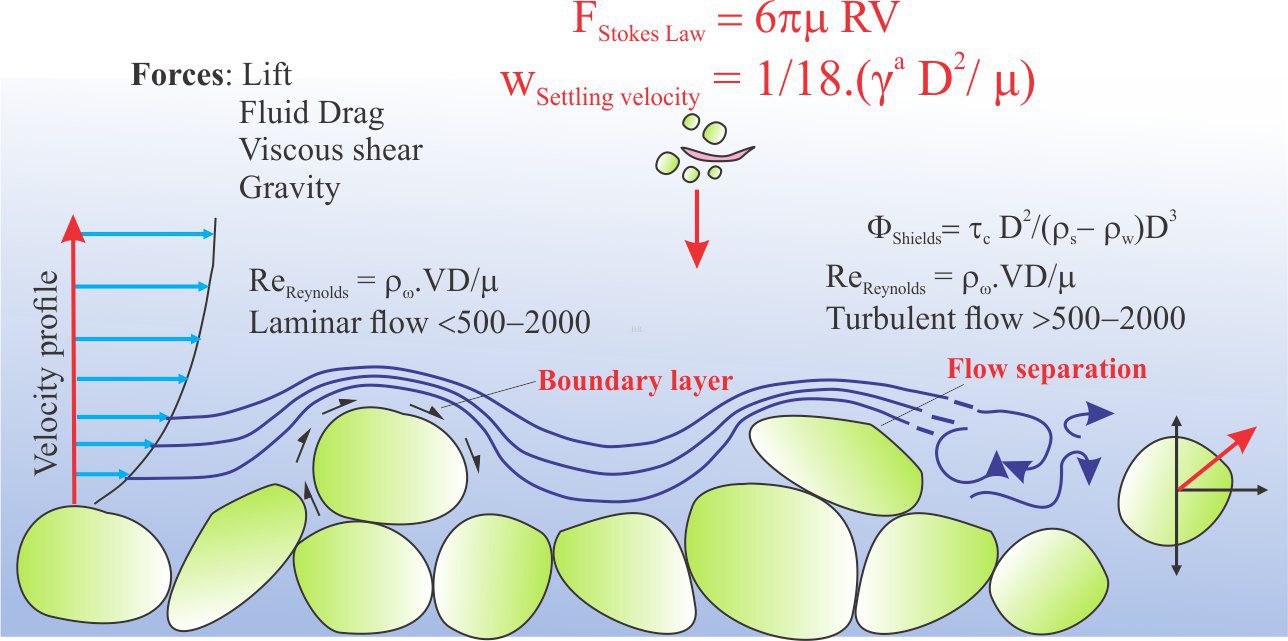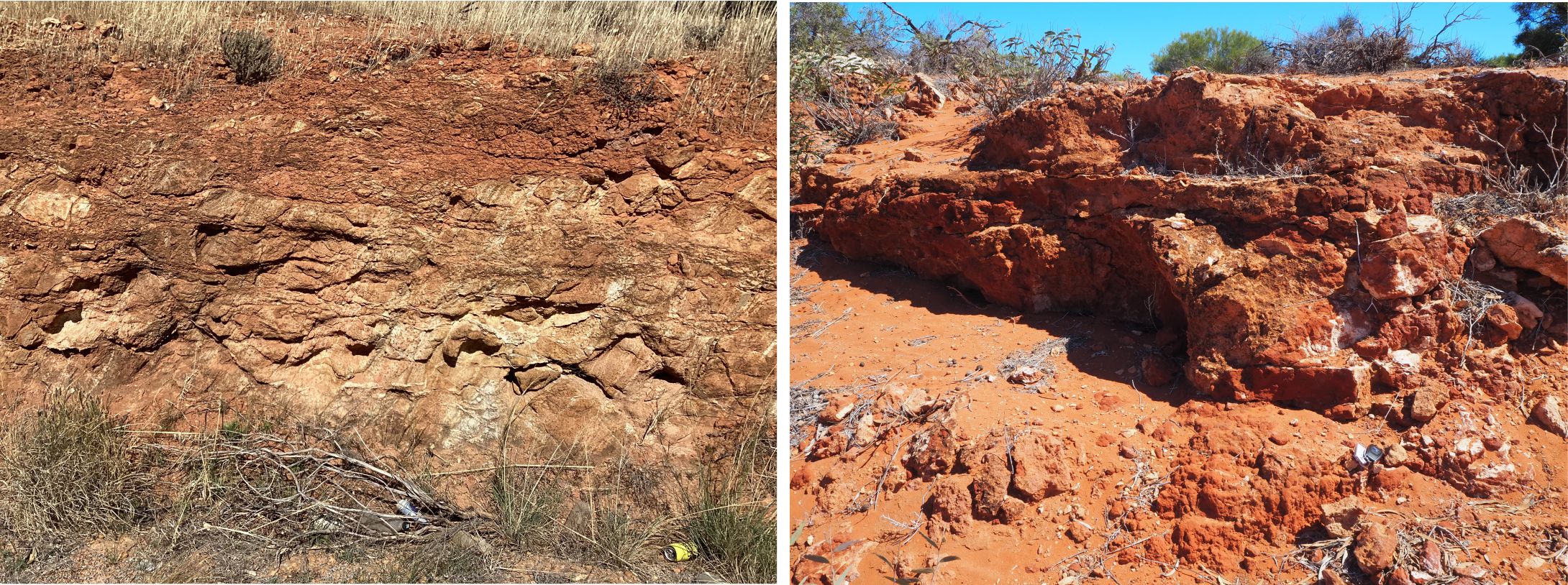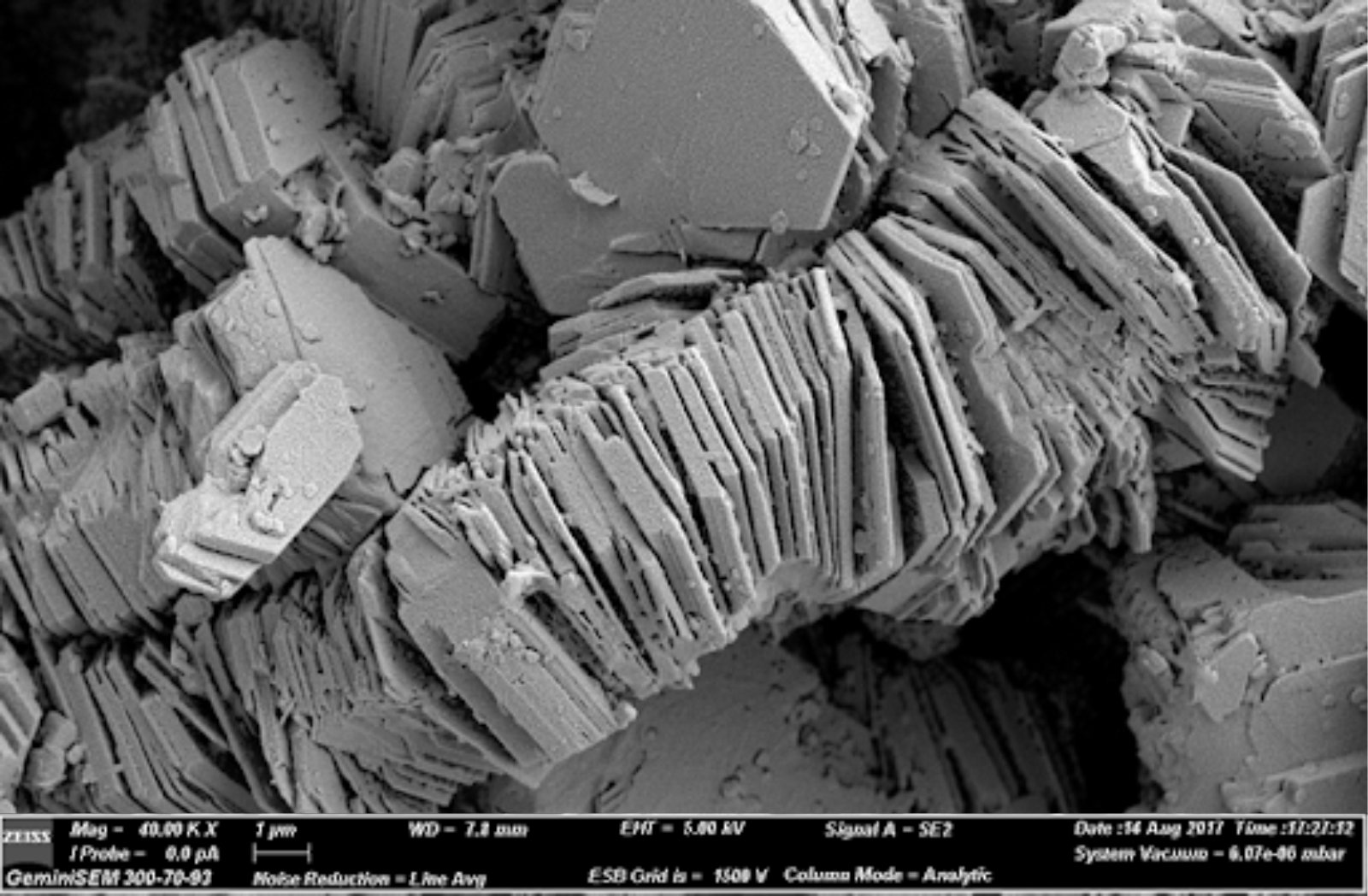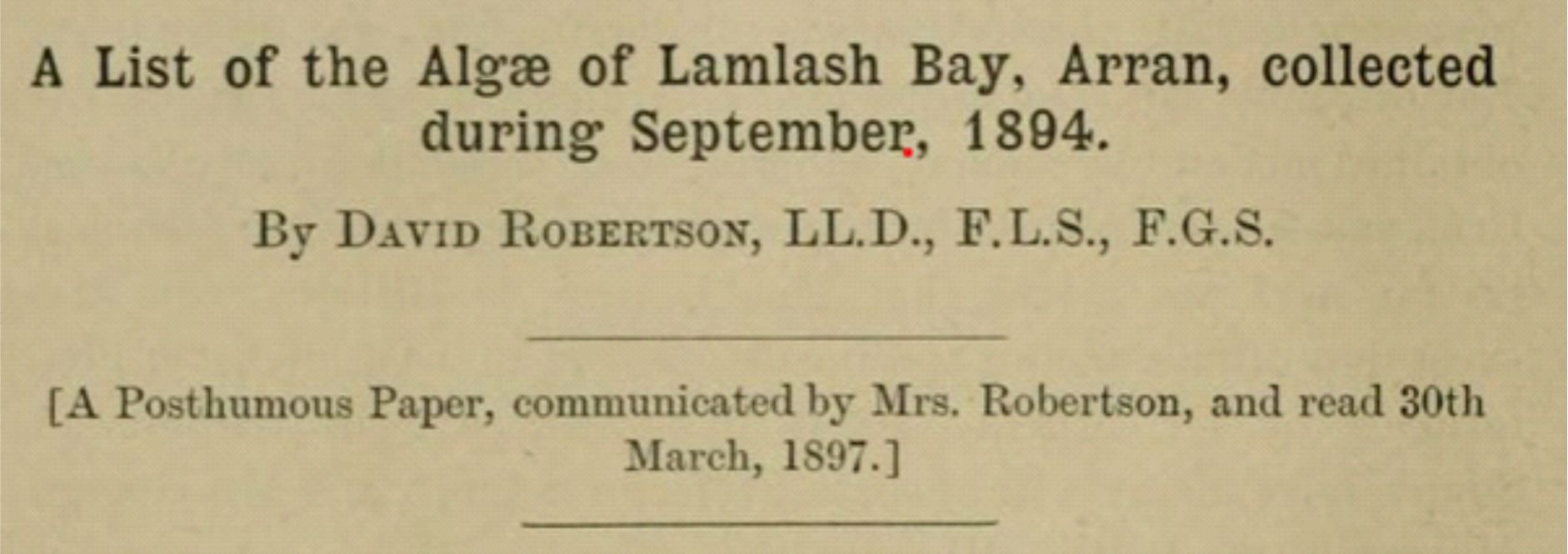Provenance – the origin of sand
This post is part of the How To… series
See the companion posts – Provenance and plate tectonics
Provenance is an investigative process that attempts to find out where things originated; a piece of art, an ancient manuscript, a sandstone. In geology, provenance usually applies to sediments and sedimentary rocks – where did they come from? At its most basic, provenance determines the kind of source rock that supplied loose sediment. But provenance can also provide information about:
- Paleoclimate, particularly weathering of rock where the physical agents of erosion and chemical agents of mineral alteration, determine the volumes of sediment produced and its composition. For example, warm humid climates favour the formation of deep soil profiles where minerals like feldspar, and ferromagnesians like amphiboles and pyroxenes are susceptible to dissolution and alteration.
- Paleotopography – was there mountainous relief (e.g. orogenic belts or volcanic arcs), or low relief across an ancient craton?
- Ancient sediment transportation corridors such as terrestrial drainage systems or sediment distribution across a marine shelf or platform to the deep ocean,
- Possible tectonic dislocation between source areas and sites of sedimentation (sedimentary basins), for example shortening across a mountain thrust belt, or lateral displacement along strike slip or transcurrent faults? Such dislocations may even involve tectonic plates or terranes that have moved 100s of kilometres, separating source rocks from the sedimentary basin.
- Changes in mineralogy resulting from unroofing. For example, the upper crustal levels of magmatic arcs (including volcanoes) will produce abundant lithics and plagioclase, and lesser amounts of quartz. As uplift and erosion exposes (unroofs) deeper intrusive rocks, there may be a change to lithic-poor sediment with concomitant increases in quartz and or feldspar. Likewise, uplift and erosion of an orogenic belt may produce an initial pulse of sedimentary lithics and recycled quartz, that with gradual unroofing of a metamorphic core produces sediment laden with polycrystalline quartz and a new suite of heavy minerals, particularly micas.
It is instructive to look at suites of sedimentary rocks. This is important because there may be an opportunity to gauge regional trends in composition and texture in relation to changes in the source area (e.g. uplift), drainage, and depositional paleoslope (i.e. the regional dip of sedimentary basins). Your first task is to identify the mineralogy and textural properties like grain sorting and angularity.
Some of the problems associated with the determination of provenance are nicely illustrated using quartz arenites as an example. Quartz arenites contain 95% and more detrital quartz grains. They tend to be well sorted; grains are well rounded. Whence all that quartz? Some useful questions and considerations to begin your determination might be (the questions apply to sedimentary rocks of any composition):
- Have the distribution and age of sedimentary units and potential source rocks been mapped in sufficient detail?
- Stratigraphic-sedimentologic evidence may help pin-point potential sediment sources? Particularly useful are any mineralogical changes that coincide with down-dip facies changes or vertical stratigraphy.
- Can regional paleocurrent trends be linked to drainage of potential source rock areas?
- Do the potential source rocks contain sufficient amounts of quartz; do they contain the right kinds of quartz?
- What is the mineralogy of the quartz? You will need to determine the proportions of monocrystalline and polycrystalline varieties, and whether the quartz has strained (i.e. deformed crystal lattice) or unstrained extinction. Is there any volcanic quartz?
- The suite of heavy minerals can be very instructive. Common minerals include the ferromagnesian groups of like pyroxenes, amphiboles, micas, and olivine, plus iron oxides such as magnetite and ilmenite, and tourmalines, garnets and zircon. Most of these minerals occur in several different rock types (intrusive, metamorphic, volcanic), and on their own may not be diagnostic. Ferromagnesians are prone to alteration by weathering and during diagenesis. But with careful observation you should be able to tease useful provenance information from the suite. Of the micas, muscovite is probably the most useful in that it does not occur in extrusive volcanics but is common in metamorphic and intrusive rocks. Minerals like sillimanite and kyanite are almost exclusively metamorphic. Olivine (although uncommon as a heavy mineral), is particularly prone to alteration and in most cases will be a first cycle product that pinpoints mafic volcanic and intrusive source rocks.
- Zircon is extremely durable and can survive two or more cycles of deposition, burial, metamorphism and uplift. Over the last 2 decades, Zircon has assumed a position of importance because technology now allows the determination of radiometric dates not just from whole single crystals, but from different parts of a crystal. Knowing zircon ages helps pinpoint source candidates.
- Are there any trends in textural properties or mineralogy along depositional dip or stratigraphically? Are there down-stream changes in grain size and angularity with distance from source? Has the proportion of less stable minerals been reduced? For example, if the primary source rock is granite there will be an initial mix of monocrystalline quartz, potassium feldspar and plagioclase, and heavy minerals like biotite and muscovite. Mechanical abrasion and chemical weathering will preferentially reduce the feldspar population. The micas, even though they are denser than quartz or feldspar, will be preferentially removed because they behave like hydraulically light minerals. There will be a tendency for quartz to become dominant even though it originally was volumetrically subordinate to the feldspars.From your thin section observations and having considered some of the above, what are the potential source rock types? In answering this question, you need to keep in mind the likelihood that the sedimentary rock under the microscope may look nothing like its progenitor.
Having decided on likely source rocks and source areas, it is now time to consider provenance in relation to tectono-stratigraphic domains associated with plate tectonics – are the source rocks-source terrain and adjacent sedimentary basin part of an orogenic belt and foreland basin, an accretionary prism, a magmatic arc-trench complex? A companion post examines the rationale behind these questions.
Some useful texts and papers:
Petrology of Sedimentary Rocks, Sam Boggs Jr. 2012
R.V. Ingersoll, 1978, Petrofacies and Petrologic Evolution of the Late Cretaceous Fore-Arc Basin, Northern and Central California. The Journal of Geology Vol. 86, pp. 335-352
